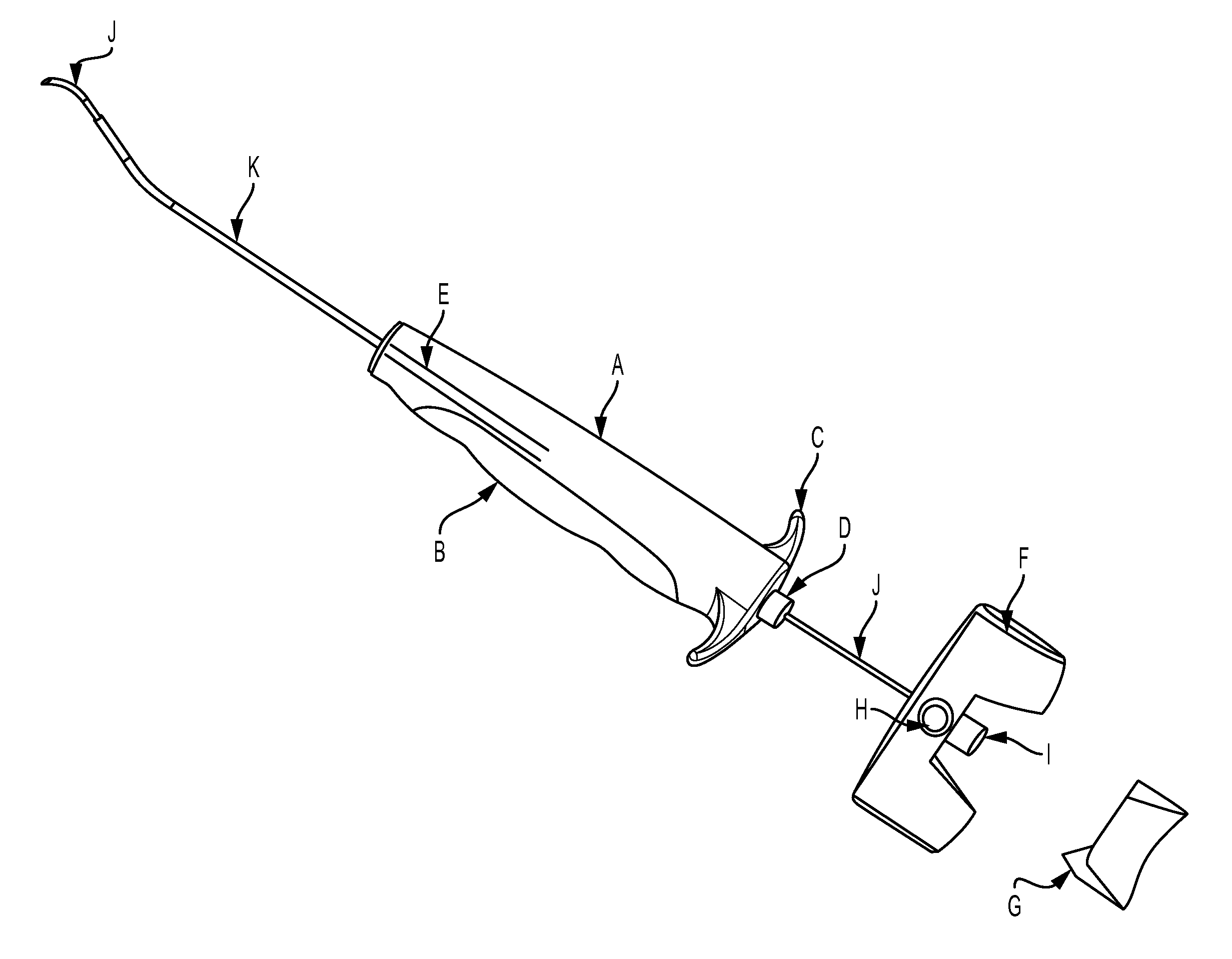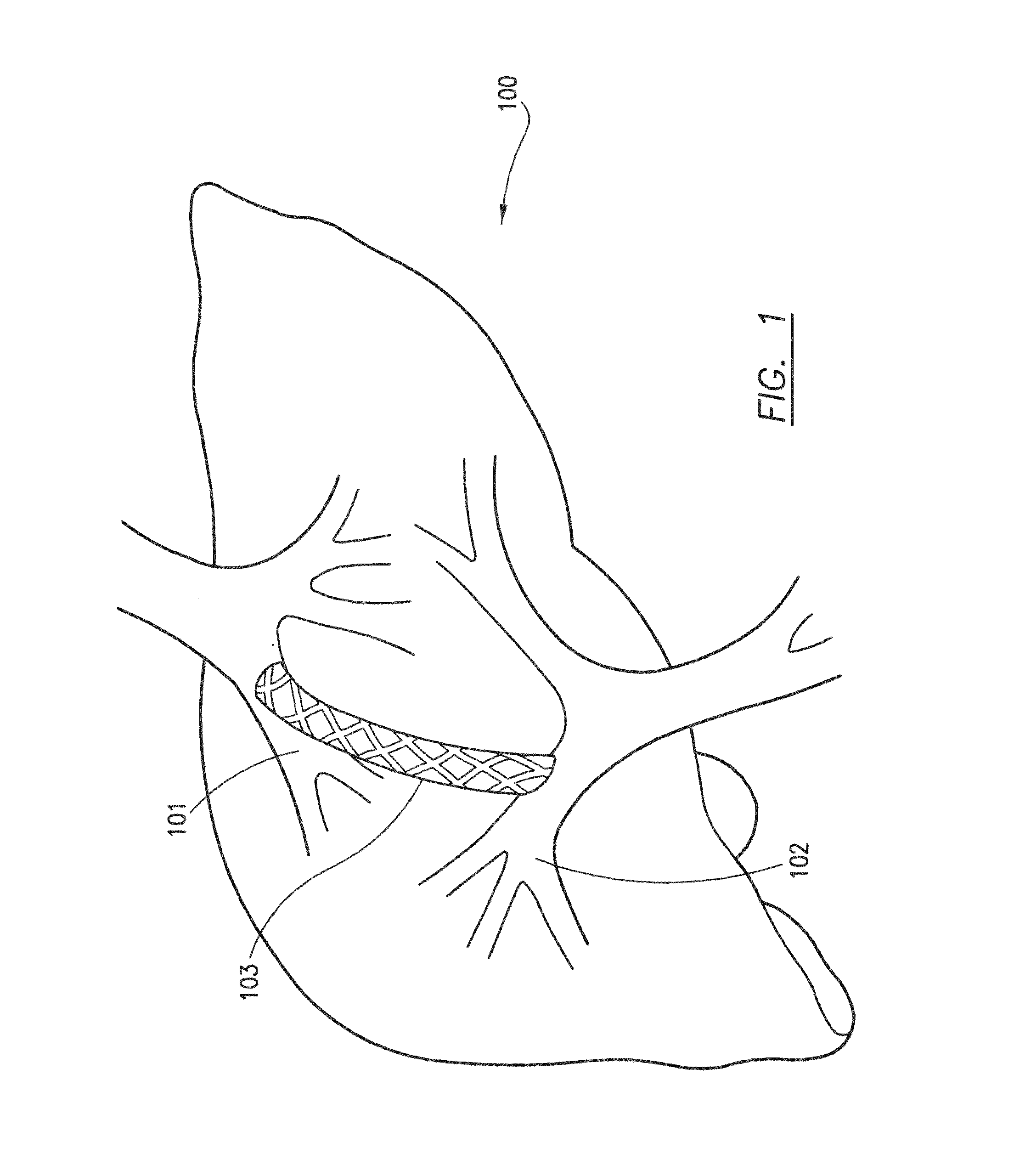Transjugular intrahepatic portosystemic shunt device
a transjugular and systemic technology, applied in the field of transjugular intrahepatic portosystemic shunt, can solve the problems of reducing the likelihood of potentially fatal complications, injury to adjacent organs, etc., and achieve the effect of facilitating the rapid catheterization of the portal vein and improving the safety and efficacy of catheterization
- Summary
- Abstract
- Description
- Claims
- Application Information
AI Technical Summary
Benefits of technology
Problems solved by technology
Method used
Image
Examples
Embodiment Construction
[0044]A multi-needle TIPS device and a method for using the multi-needle TIPS device, in accordance with the present invention, are described with initial reference to FIG. 1. The device and method described herein is desirable for locating quickly the proper portal vein for establishing a shunt 103 through a human liver 100, connecting the right hepatic vein 101 to the right portal vein 102.
[0045]Referring now to FIGS. 2, 3, 4, 5, 6, and 7, the device 200 and its primary components are depicted in isolation and in a retracted and extended state. FIG. 2 shows the device 200 in the retracted state, which is a non-engaging, default state. An outer sheath 201 is the primary exterior component of the device 200. The outer sheath comes with an inner dilator to allow introduction over a wire into the right hepatic vein. The outer sheath 201 is a ten (10) French sheath which is made of a semi-rigid material. In FIG. 4, the outer sheath 201 has a shaft that measures between 35 and 40 cm in ...
PUM
 Login to View More
Login to View More Abstract
Description
Claims
Application Information
 Login to View More
Login to View More - R&D
- Intellectual Property
- Life Sciences
- Materials
- Tech Scout
- Unparalleled Data Quality
- Higher Quality Content
- 60% Fewer Hallucinations
Browse by: Latest US Patents, China's latest patents, Technical Efficacy Thesaurus, Application Domain, Technology Topic, Popular Technical Reports.
© 2025 PatSnap. All rights reserved.Legal|Privacy policy|Modern Slavery Act Transparency Statement|Sitemap|About US| Contact US: help@patsnap.com



